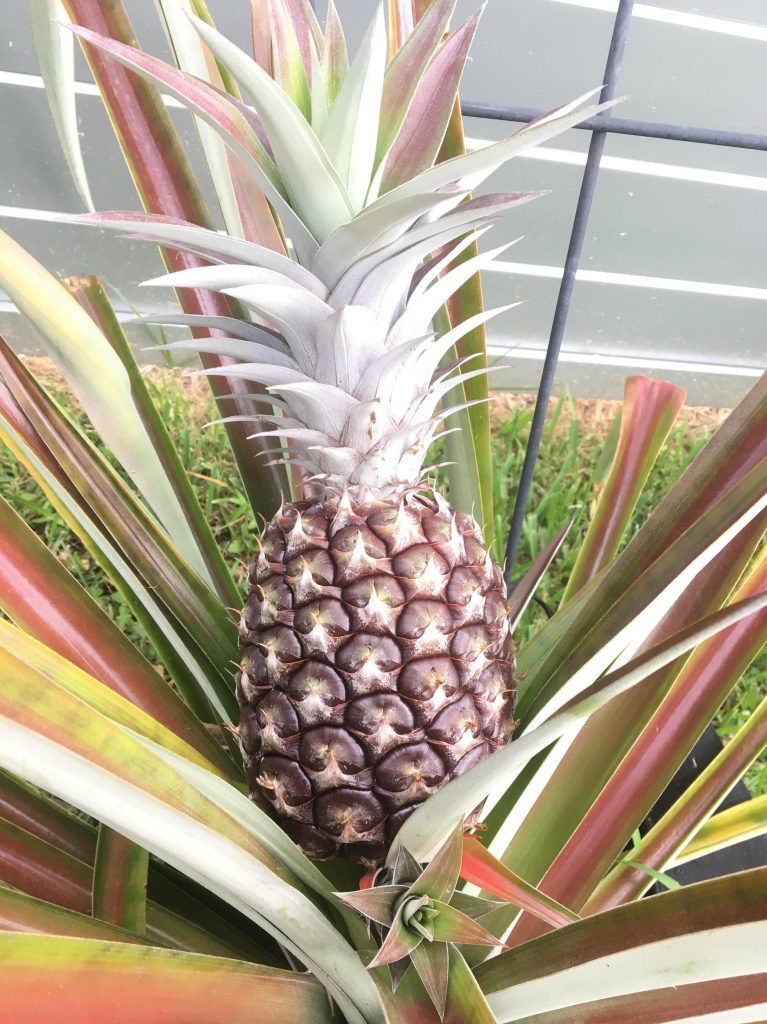
White Jadel Pineapple
Pineapple with white flesh, low acidity and a totally edible core!
Most pineapple plants need full sun, but White Jade also thrives in semi-shaded environments. Pineapple plants need excellent soil drainage and are foliar feeders like all bromeliads. So, be careful not to overwater and be sure to fertilize through the leaves, not the soil.
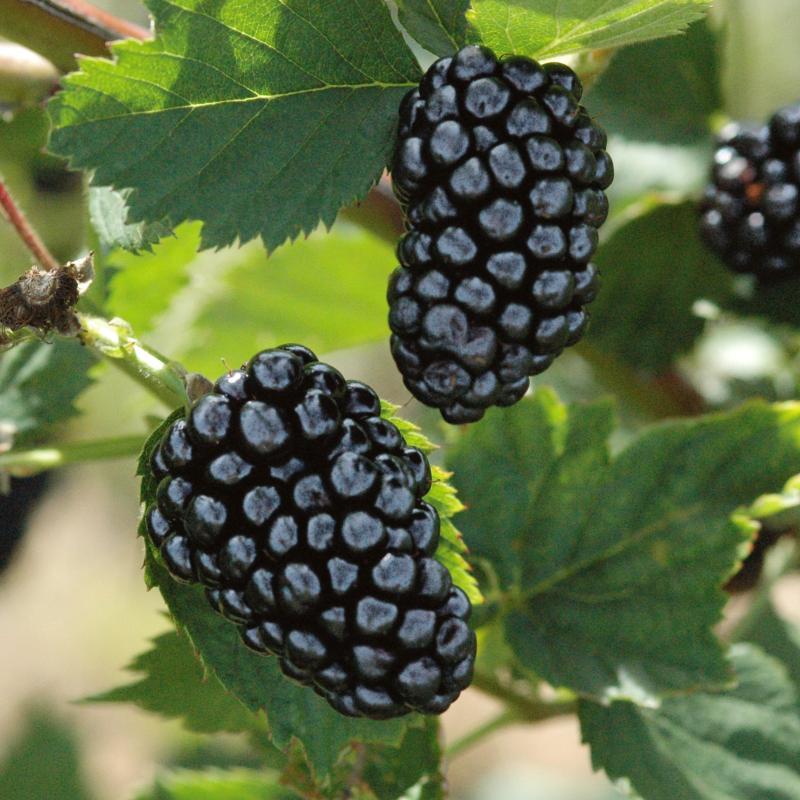
Natchez blackberry
Natchez is an excellent thorn-less blackberry which crops early in the season, and has the characteristic semi-upright, spine-free growing habit. The yield of fruit is twice that of its sister variety Arapaho, and it produces a consistent large berry. This delicious berry is one of the first producers of the season.
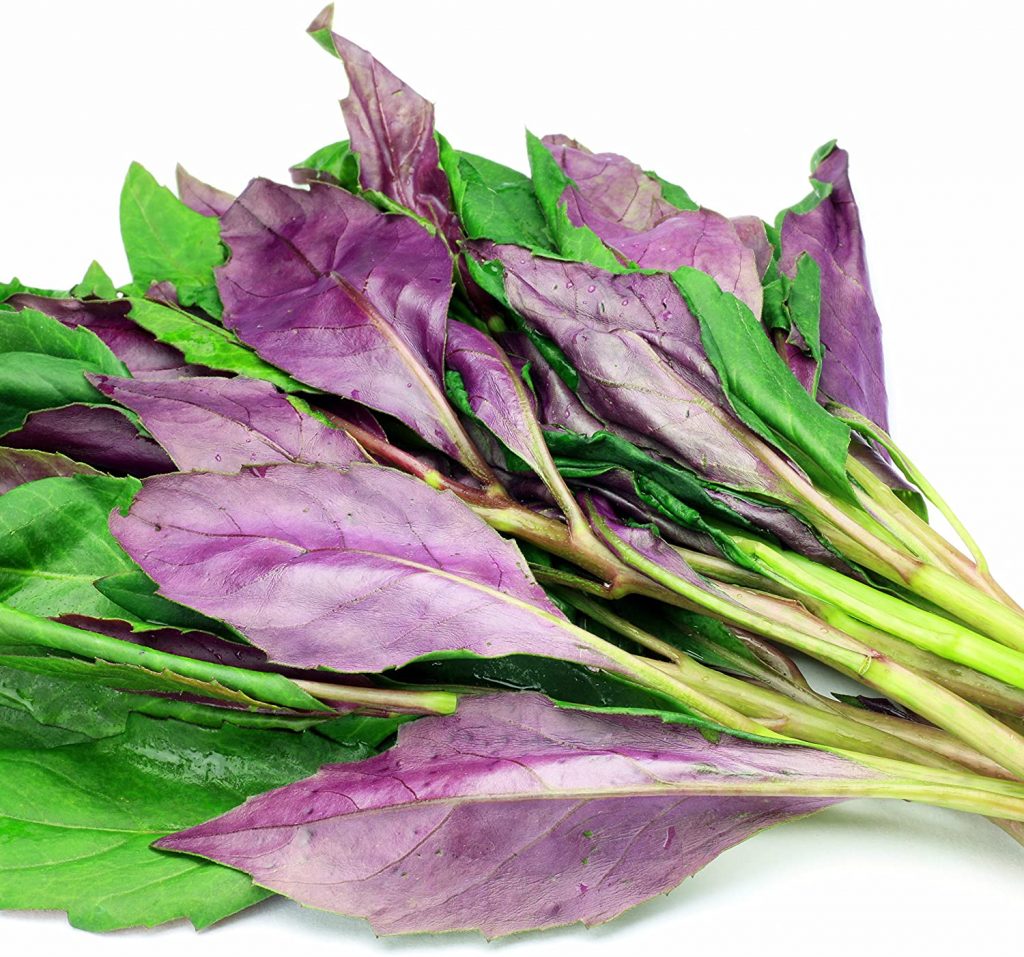
Okinowan Spinach
Gynura bicolor, hongfeng cai 紅鳳菜, okinawan spinach or edible gynura, is a member of the chrysanthemum family. It is native to China, Thailand, and Myanmar but grown in many other places as a vegetable and as a medicinal herb.
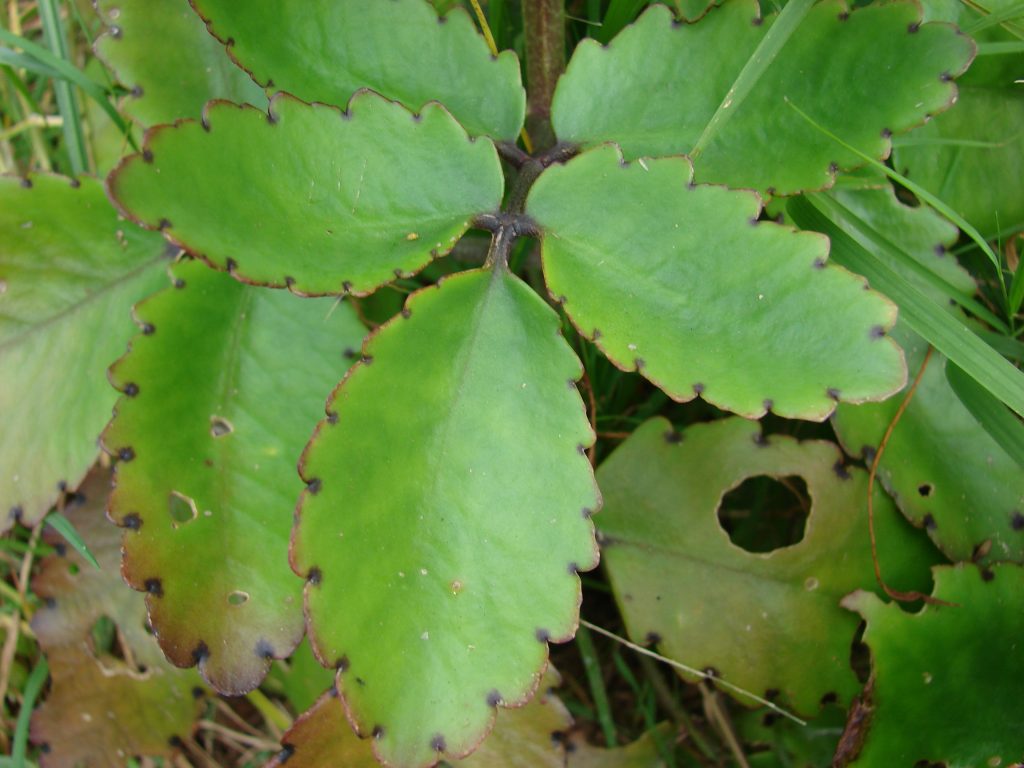
Miracle Leaf
The botanical name for the Miracle Leaf plant is Bryophyllum pinnatum. What did studies reveal about this plant? “Bryophyllum pinnatum leaves showed preventive effect against renal calculi formation and validates its ethnomedicinal use in urinary disorders. It further supports its therapeutic potential for the treatment of urinary calculi. ”You might be saying to yourself right now, “So what?” “Urinary calculi??” Well, urinary calculi are solid particles in the urinary tract – i.e. kidney stones, bladder stones, etc.
This plant has been scientifically proven to alleviate conditions caused by “urinary calculi.” One such study can be reviewed at https://www.ncbi.nlm.nih.gov/pmc/articles/PMC5382824/ Results from the use of miracle leaf components were comparable to the drug, Cystone. Miracle Leaf, or Bryophyllum pinnatum, is a succulent plant and actually makes an excellent house plant! It is native to Madagascar, but has been naturalized in tropical and subtropical regions. We can claim that this plant has “miraculous” properties, BUT even more miraculous? How it’s propagated! You can propagate this plant from its leaves alone!!! It is a perennial succulent that grows to be about 3 feet tall. When the plantlets fall to the ground, they root and become larger plants.
Also of note, there is some evidence to indicate that Sleep Quality Improves During Treatment With Bryophyllum pinnatum https://www.ncbi.nlm.nih.gov/pmc/articles/PMC4538317/
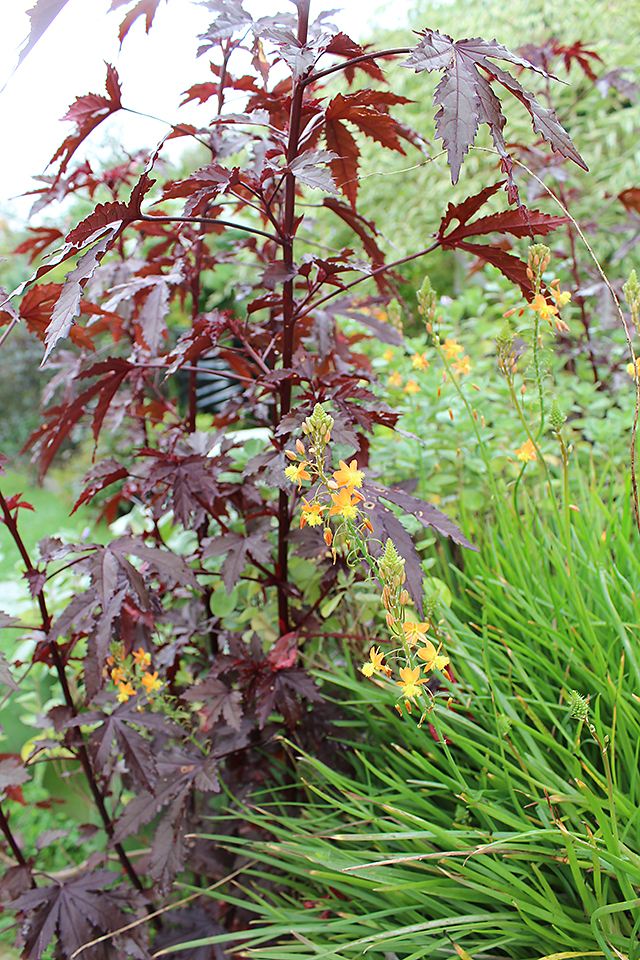
Red Shield Hibiscus
This is one the best purple-foliaged plants in the garden. Each year, it looks the most amazing the week before hard frost will kill it. Sigh.
Red Shield is a tropical hibiscus. It’s not purple because it’s a new and sophisticated hybrid. Red Shield is the species itself, Hibiscus acetosella, not a cultivar name. Its sophistication is natural, indigenous, and innate. Cool, eh?
The shiny purple leaves seem to be channeling either a decent Japanese maple or a remarkable new kind of pot. Actually, they’re edible, if not smokable. They look and taste delicious frollicking with lettuce leaves.
Thanks to their heat-proof color, they look just as smashing in the garden. Burgundy goes with every other color you could ever need. I cozy Red Shield up to different colors each year just to put its cosmopolitan ease to the test.
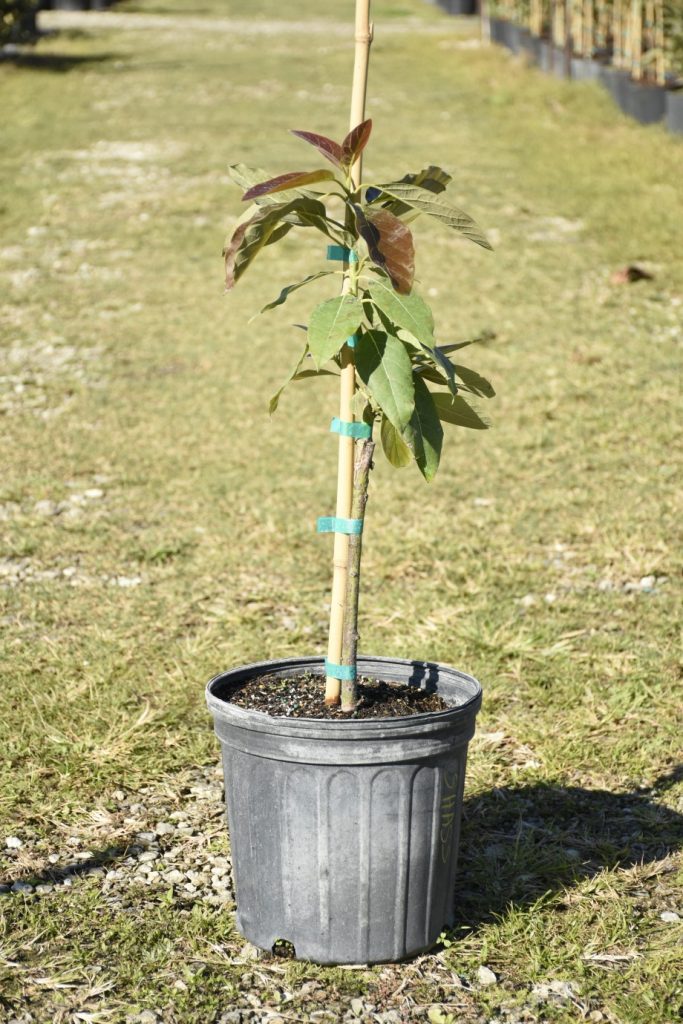
Uh La La/Avacado Super Haas/Ooh la la
This variety, a seedling from Louisiana presumably derived from Hass, was originally sold to us under the name ‘oo La La’, which was evidently later changed to ‘Super Hass’.
The Super Hass Avocado variety stems from the original Hass Avocado, and has the flavor profile to prove it. Rich, nutty flavor with a high oil content makes this avocado a winner. The fruits have a dark black skin and can weigh in at over a pound. Super Hass has been adapted for warmer, humid climates.
The fruit is smallish, oval shaped and turns black as it nears maturity. It has a pale colored flesh and outstanding rich nut flavor, very similar to regular Hass but with perhaps larger fruit
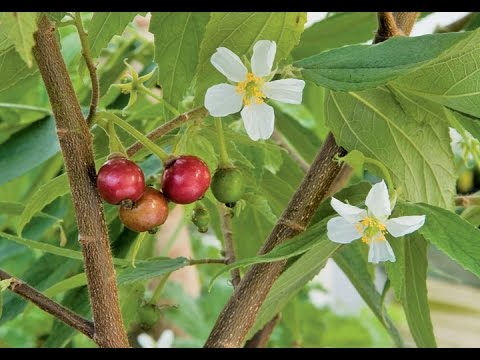
Strawberry Tree
“Strawberry Tree,” or Jamaica Cherry tree, you would be correct!! Of course, if you said, “Muntingia calabura,” then color me impressed!! In Florida, it is known as a “strawberry tree,” although an actual strawberry tree is a European ornamental and fruit tree so don’t get the two confused!
The Jamaica Cherry tree is indigenous to southern Mexico and Central America, tropical South America, the Greater Antilles, St. Vincent and Trinidad – all of which sound like places I’d love to vacation! Vacationing in exotic places might not be in your plans for the foreseeable future, so why not bring a touch of exotica right to your own backyard or food forest?
Interesting fact about these trees, in Brazil, they are planted along river banks so that the flowers and fruits fall into the water serving as bait that attract fish for fishermen!
The Jamaica Cherry Tree is an evergreen, self-fruiting tree that grows rapidly and can easily exceed 12 feet tall in two years. They are known to thrive in poor soil, doing well in both acid and alkaline soil. We recommend planting in well-draining soil prepped with plenty of organic matter. The trees can tolerate full sun to partial shade and prefer a humid environment. Use organic fertilizer once a month during the growing season and deep water once a week when it’s fruiting for best fruiting results. We also recommend mulching around the tree to protect the roots from temperature extremes. These trees can bear fruit all year in the right climate, but generally take a break in Florida when the weather cools off.
Another fun fact – the wood from this tree ignites quickly, burns intensely and gives off very little smoke. In Jamaica, it is the preferred wood to use for cooking!